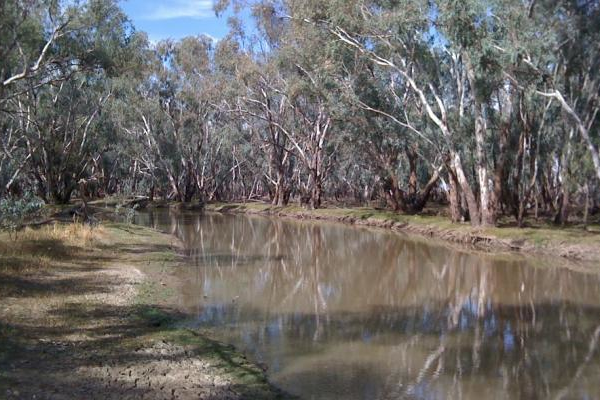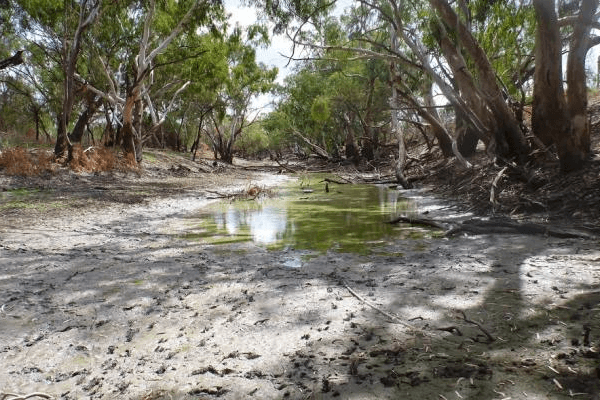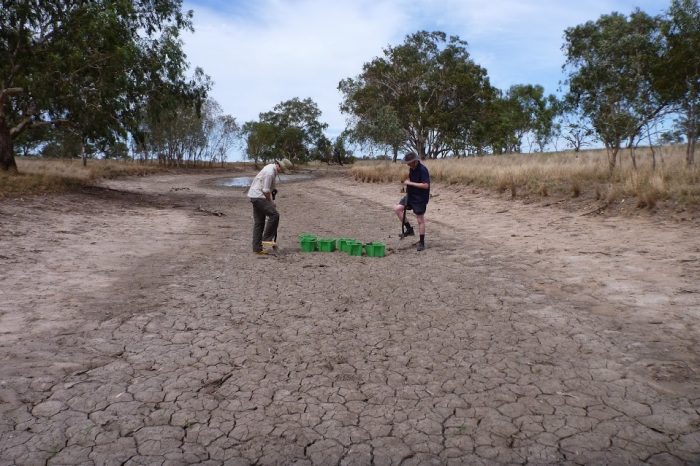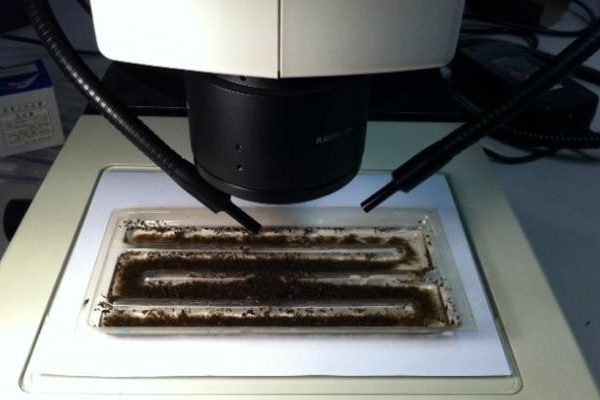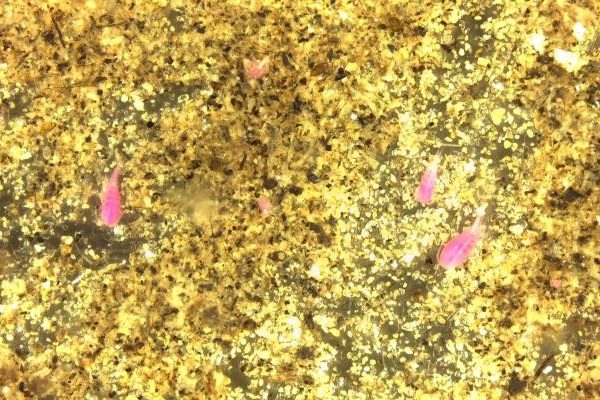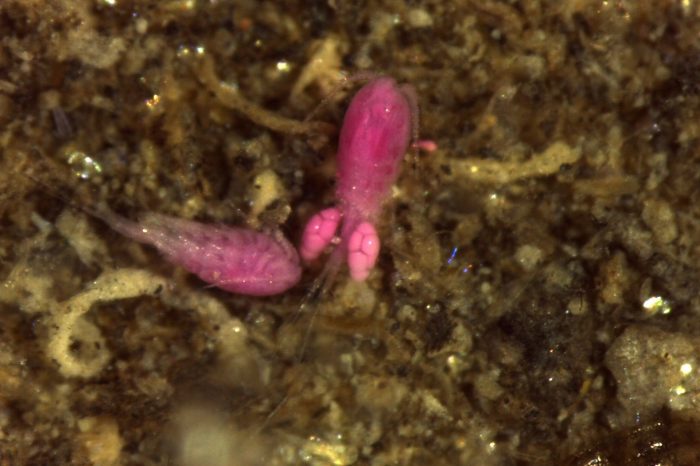
Food-web dynamics and flooding regimes
A decade ago, researchers showed that waterbird densities, diversity and breeding declined in the Macquarie Marshes as river regulation and water abstractions increased and flooding reduced. It was also known that loss of flooding and extended drying on the Darling River floodplain reduced the density and diversity of microinvertebrates when sediments were inundated in the laboratory. We wanted to know whether microinvertebrates in the Macquarie Marshes were impacted by loss of flooding and if components of their food web were also impacted. Microinvertebrates are smaller than 250mm and include rotifers and microscopic crustaceans such as cladocerans (water fleas), ostracods, copepods.
Microinvertebrates play a key role in floodplain river food webs as prey to a wide range of fauna including native fish, waterbirds and macro-invertebrates, as well as being important consumers of algae, bacteria and biofilms. They form an important link between primary producers and higher trophic levels. Microinvertebrates contribute to biodiversity and their reproduction, growth, and recruitment is heavily influenced by flow regimes. This makes them good indicators for assessing the success or failure of flow restoration. They are also important in the life cycles of fish and both fish diversity and recruitment are strongly influenced by the availability of suitable food resources. Limited food supply of microinvertebrates is a key factor causing failed recruitment and high initial mortality of larval fish. Blooms of microinvertebrates are associated with better condition in some fish species particularly those utilising wetlands where densities of microinvertebrates are higher than in nearby river channel. Microinvertebrates pulse after floods and this higher food availability is associated with improved body condition of fish after floods compared to periods of low flow.
We compared floodplain sediments dry for 11, 4 and 1 year. We found that densities of microinvertebrates were extremely high, but that this food resource declined with loss of flooding. Further down the food web, loss of flooding also depleted organic matter and caused an earlier shift to oxygen production via photosynthesis of algae and a reduction in respiration (the breakdown of organic matter). Levels of organic carbon, phosphorous and nitrogen in the sediments and the water declined as the time without flooding extended. Microbial community composition involved in the breakdown of organic matter and the dominant algae both changed with loss of flooding. These observed changes indicate that after long periods without flooding, the lower food web will be less productive and diverse when flooding eventually occurs. There will be less food to support waterbirds and fish. As we finalise analysis of this study, we're developing thresholds of concern to trigger management action when densities and diversities of microinvertebrates or concentrations of nutrients fall to these critical levels.
Temporary versus constant flows: a flat-lined pulse
We compared floodplain sediments dry for 11, 4 and 1 year. We found that densities of microinvertebrates were extremely high, but that this food resource declined with loss of flooding. Further down the food web, loss of flooding also depleted organic matter and caused an earlier shift to oxygen production via photosynthesis of algae and a reduction in respiration (the breakdown of organic matter). Levels of organic carbon, phosphorous and nitrogen in the sediments and the water declined as the time without flooding extended. Microbial community composition involved in the breakdown of organic matter and the dominant algae both changed with loss of flooding. These observed changes indicate that after long periods without flooding, the lower food web will be less productive and diverse when flooding eventually occurs. There will be less food to support waterbirds and fish. As we finalise analysis of this study we are developing thresholds of concern to trigger management action when densities and diversities of microinvertebrates or concentrations of nutrients fall to these critical levels.
Floodplain inundation: a wetland springs to life
In the Macquarie Marshes, floods are associated with massive waterbird breeding events and a proliferation of wetland plants. When we looked beneath the surface, we also found remarkable productivity in the food webs that underpin waterbird communities. Densities of microinvertebrates were world renowned (10-20,000/litre) after an environmental allocation inundated floodplain along Gum Cowal and Bora Creeks in 2005. Nutrient levels pulsed and microbial activity was higher than we had previously observed in the constant creeks. Macroinvertebrate diversity was greater in floodplain habitats and along temporary creeks than observed in constant creeks. Our findings show that multiple levels of the food web thrive after floods to support waterbird breeding events. Our ongoing research is exploring the food web links between invertebrates, waterbirds, fish and plants after flooding.


